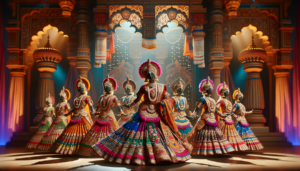Contemporary dance is a dynamic and expressive form of dance that has captivated audiences around the world. It is a genre that encompasses a wide range of styles and techniques, drawing from various dance disciplines such as modern, jazz, lyrical, and classical ballet. Contemporary dance allows dancers to explore their creativity and emotions through movement, creating powerful and thought-provoking performances. In this article, we will delve into the world of contemporary dance, exploring its history, key elements, techniques, and notable performances.
Introduction to Contemporary Dance
What is Contemporary Dance?
Contemporary dance is a genre of expressive dance that emerged in the mid-20th century. It is characterized by its fluidity, versatility, and emphasis on individual interpretation. Unlike traditional dance forms that adhere to strict rules and techniques, contemporary dance encourages dancers to explore their own unique style and express their emotions through movement. It is a highly expressive and creative form of dance that allows for a wide range of interpretations and personal expression.
Contemporary dance often incorporates elements from various dance styles, including modern, jazz, lyrical, and classical ballet. Dancers draw from these techniques to create their own unique vocabulary of movement. The focus is on conveying emotions, telling stories, and exploring themes through the body. Contemporary dance performances often tackle complex and thought-provoking subjects, inviting the audience to engage with the work on a deeper level.
Key Elements of Contemporary Dance
One of the defining features of contemporary dance is its emphasis on expressive movement and emotional storytelling. Dancers use their bodies to convey a wide range of emotions, from joy and ecstasy to pain and despair. They explore the full range of human experience through movement, creating performances that are both technically impressive and emotionally resonant.
Another key element of contemporary dance is its fluidity and versatility. Unlike traditional dance forms that have strict rules and techniques, contemporary dance allows for a great deal of individual interpretation and experimentation. Dancers are encouraged to explore their own unique style and find new ways of moving and expressing themselves. This freedom of expression is what makes contemporary dance such a dynamic and exciting art form.
The History of Contemporary Dance
Origins and Evolution
Contemporary dance has its roots in the modern dance movement of the early 20th century. Pioneers such as Isadora Duncan and Martha Graham rejected the rigid conventions of classical ballet and sought to create a new form of dance that was more expressive and natural. They emphasized the importance of individual interpretation and emotional expression, laying the groundwork for what would later become known as contemporary dance.
Over the decades, contemporary dance continued to evolve and incorporate elements from various dance styles. In the 1960s and 70s, the postmodern dance movement emerged, pushing the boundaries of what was considered dance. Choreographers such as Merce Cunningham and Trisha Brown experimented with chance procedures and everyday movements, creating works that challenged traditional notions of dance.
Influential Figures in Contemporary Dance
Throughout its history, contemporary dance has been shaped by a number of influential figures. Martha Graham is often credited with laying the foundation for modern dance, which would later evolve into contemporary dance. Her technique emphasized contraction and release, as well as the use of the torso and pelvis as the center of movement.
Merce Cunningham was another key figure in the development of contemporary dance. He is known for his use of chance procedures and his collaborations with artists from other disciplines, such as John Cage and Robert Rauschenberg. Cunningham’s work challenged traditional notions of dance and pushed the boundaries of what was possible on stage.
Other influential figures in contemporary dance include Pina Bausch, known for her highly expressive and emotional works; Alvin Ailey, who founded the Alvin Ailey American Dance Theater and popularized modern dance; and Twyla Tharp, known for her innovative and eclectic approach to choreography.
Techniques and Styles in Contemporary Dance
Modern Dance Techniques
Contemporary dance draws heavily from modern dance techniques, which emphasize natural and expressive movement. Some of the most influential modern dance techniques include:
- Graham Technique: Developed by Martha Graham, this technique emphasizes contraction and release, as well as the use of the torso and pelvis as the center of movement.
- Horton Technique: Developed by Lester Horton, this technique focuses on strength, flexibility, and control, with an emphasis on the use of the back and legs.
- Limón Technique: Developed by José Limón, this technique emphasizes the use of breath and weight, as well as the exploration of opposites such as fall and recovery.
These techniques provide a foundation for contemporary dancers, allowing them to develop strength, flexibility, and control while exploring their own unique style and expression.
Jazz and Lyrical Dance Techniques
Contemporary dance also incorporates elements from jazz and lyrical dance. Jazz dance is known for its high energy, syncopated rhythms, and sharp, precise movements. Lyrical dance, on the other hand, emphasizes fluidity, grace, and emotional expression. These techniques add variety and depth to contemporary dance performances, allowing dancers to showcase their versatility and range.
Jazz and lyrical techniques are often used in contemporary dance to convey specific moods or emotions. For example, a fast-paced, high-energy jazz sequence might be used to convey excitement or joy, while a slow, fluid lyrical sequence might be used to convey sadness or introspection. By incorporating these techniques, contemporary dancers can create performances that are both technically impressive and emotionally resonant.
Incorporating Classical Ballet
While contemporary dance often rejects the rigid conventions of classical ballet, many contemporary dancers still incorporate elements of ballet technique into their training and performances. Ballet provides a strong foundation in technique, alignment, and control, which can be invaluable for contemporary dancers.
Contemporary choreographers often use ballet vocabulary as a starting point for their work, deconstructing and reimagining classical steps and positions. They may also incorporate ballet partnering techniques, such as lifts and supported movements, into their choreography. By blending ballet with other dance styles, contemporary dancers can create works that are both technically virtuosic and emotionally expressive.
Choreography in Contemporary Dance
The Role of the Choreographer
In contemporary dance, the choreographer plays a crucial role in shaping the artistic vision and direction of a work. Choreographers are responsible for creating the movement vocabulary, selecting music, designing costumes and sets, and working with dancers to bring their vision to life.
Contemporary choreographers often draw inspiration from a wide range of sources, including literature, art, music, and personal experiences. They may also collaborate with artists from other disciplines, such as composers, visual artists, and theater directors, to create multi-disciplinary works that push the boundaries of what is possible in dance.
Creating Dance Sequences
The process of creating a contemporary dance work often begins with improvisation and exploration. Choreographers may work with dancers to generate movement material based on a particular theme, emotion, or idea. They then shape and refine this material into a cohesive sequence, using techniques such as repetition, variation, and contrast to create structure and meaning.
Contemporary choreographers also pay close attention to the use of space, time, and energy in their work. They may explore different spatial relationships between dancers, such as unison, canon, and counterpoint, to create visual interest and depth. They may also play with tempo and rhythm, using stillness and sudden bursts of movement to create dramatic tension and release. By carefully crafting these elements, choreographers can create works that are both visually striking and emotionally powerful.
Notable Contemporary Dance Performances
The Trainwreck Video
One notable example of contemporary dance in recent years is the “Trainwreck” video, which features choreography by Fatima Farhan and a powerful performance by Megan Miller. Set to the song “Train Wreck” by James Arthur, the video showcases the emotional storytelling potential of contemporary dance.
In the video, Miller portrays a woman grappling with inner turmoil and pain, using her body to convey a range of complex emotions. Farhan’s choreography is fluid and expressive, incorporating elements of modern and lyrical dance to create a sense of raw vulnerability. The combination of movement, music, and performance creates a deeply affecting work that resonates with viewers on a visceral level.
Choreography by Fatima Farhan
Fatima Farhan is a rising star in the world of contemporary dance, known for her innovative and emotionally charged choreography. Her work often explores themes of identity, relationships, and the human experience, using dance as a means of storytelling and self-expression.
In addition to her work on the “Trainwreck” video, Farhan has choreographed for a variety of dance companies and theatrical productions. Her unique style blends elements of modern, jazz, and lyrical dance, creating works that are both technically impressive and emotionally resonant. Farhan’s choreography is a testament to the power of contemporary dance to move and inspire audiences.
Performance by Megan Miller
Megan Miller is a gifted dancer whose performance in the “Trainwreck” video showcases her incredible talent and emotional range. Miller’s movement is fluid and expressive, conveying a sense of raw vulnerability and pain that is both beautiful and heartbreaking to watch.
Miller’s performance is a testament to the power of contemporary dance to tell stories and convey complex emotions through movement. Her ability to embody the character and bring Farhan’s choreography to life is truly remarkable, and has earned her widespread acclaim in the dance community. Miller’s work in the “Trainwreck” video is just one example of the incredible talent and artistry that exists in the world of contemporary dance.
Music by James Arthur
The music used in the “Trainwreck” video, performed by James Arthur, plays a crucial role in setting the emotional tone and enhancing the impact of the dance. Arthur’s powerful vocals and haunting lyrics perfectly capture the sense of pain and vulnerability conveyed through Miller’s movement and Farhan’s choreography.
The use of music in contemporary dance is often an integral part of the creative process, with choreographers working closely with composers and musicians to create works that seamlessly integrate movement and sound. In the case of the “Trainwreck” video, Arthur’s music serves as a powerful emotional backdrop that heightens the impact of the dance and draws the viewer deeper into the story being told.
Conclusion
Contemporary dance is a dynamic and ever-evolving art form that continues to push the boundaries of what is possible in dance. From its origins in the modern dance movement of the early 20th century to the cutting-edge works being created by choreographers today, contemporary dance has always been a medium for exploring the human experience and expressing complex emotions through movement.
Through the use of various techniques and styles, including modern dance, jazz, lyrical, and classical ballet, contemporary dancers are able to create works that are both technically impressive and emotionally resonant. The power of contemporary dance lies in its ability to tell stories, convey complex emotions, and connect with audiences on a deep and meaningful level.
As we have seen through examples like the “Trainwreck” video, with its stunning choreography by Fatima Farhan, powerful performance by Megan Miller, and haunting music by James Arthur, contemporary dance has the power to move and inspire us in profound ways. It is an art form that will continue to evolve and challenge us, inviting us to explore the depths of the human experience through the language of movement.






